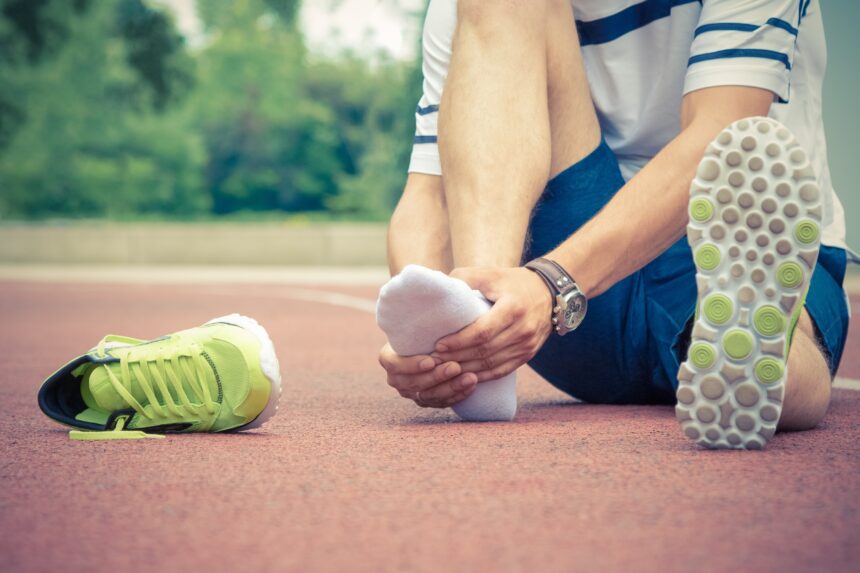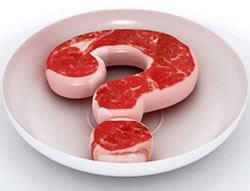Your feet contain around a fourth of the bones in your entire body, and because these are such a complex part of your entire being, it’s very important to take care of them. Each of the many blood vessels, ligaments, bones, and tendons in your feet provide very specific functions, such as helping provide or maintain your balance. In turn, when your feet suffer, your entire body may suffer, too.
Whether you’re out for a walk, or playing your favorite outdoor sports, or even doing regular day-to-day activities like shopping, there’s nothing more annoying than to feel pain in your feet. Such pain can be alarming, however, as they can last for a long time or even the rest of your life. This is further made difficult if your lifestyle is sedentary or if you don’t watch your weight.
If you live anywhere near or in Eastern Idaho and feel pain or discomfort in your feet, consider visiting the Eastern Idaho Foot Clinic, which specializes in foot conditions, as well as foot injuries. When the pain becomes too much to bear, or you’re having a problem walking, getting the help of a professional could save you from permanent foot damage.
There are many, many conditions of the feet, and because we won’t be able to cover all of them here, below are seven common problems that people encounter in their feet and their joints:
- Arthritis
Arthritis is known as pain in the joints. You may have it if you have trouble walking or putting weight on any of these joints, pain and swelling after sitting or resting, or even a tenderness when you touch the joint. By itself, arthritis is actually a very broad subject that can span a couple of different types, especially when it comes to foot care:
- Post-Traumatic Arthritis – After being afflicted with an injury, you may experience post-traumatic arthritis. However, most of these cases go unnoticed for years.
- Rheumatoid Arthritis – Of all the examples of arthritis here, this one is the most serious. This condition involves your immune system attacking the synovia of your feet. A synovium is a soft tissue that lines your joints and as your immune system attacks it, it may cause severe swelling to the joint. The attack will eventually affect the bone and cartilage, thus causing deformity and disability in the feet.
- Osteoarthritis – This is the condition often associated with the meaning of arthritis. This occurs when the cartilage in a person’s body thins and makes the bones feel frayed and/or rough. While this is found in many elderly persons, it may happen to younger people as well. This condition often affects the bones of one’s heel, outer mid-foot, inner mid-foot, the joint of one’s big toe and foot bone, and the joint where one’s ankle and shinbone meet.
Arthritis can be treated by minimizing high-impact activities (such as jogging, or outdoor sports) and exchanging them for low-impact activities (such as swimming, tai chi, or indoor sports like chess or billiards), wearing assistive devices like braces, taking prescribed pain medication, or even surgery.
- Plantar Fasciitis
A bony growth jutting out from your heel bone and pointing toward the arch of your foot is called a heel spur. This normally doesn’t cause any pain, which means that whatever pain you feel in your heel may be caused by Plantar Fasciitis instead. This happens when the thick band of tissue that connects your heel bone to your toes gets inflamed.
The symptoms of Plantar Fasciitis involve a stabbing pain in the feet as you take a step after resting or sleeping. The pain may gradually disappear as you walk around, but it’s recommended to get your feet checked if you’re experiencing this.
Plantar Fasciitis can be caused by the following:
- Age
- Diabetes
- Running or jogging on hard surfaces
- Excess weight or obesity
- Spending prolonged hours on your feet
- Heredity
Plantar Fasciitis is difficult to diagnose due to its similarity with other foot conditions, but the most surefire way to is through an X-ray.
- Fractures
Everyone will experience an accident of some sort one time or another. As a result of such accidents, fractures in the feet bones can become problematic to any individual who experienced them. If you’ve come from an accident and think your feet are fine, you might have actually suffered a fracture if you experience bruising, a throbbing pain, a deformity of the bone, or even difficulty in walking or bearing weight.
Other causes of fractures may include falling, twisting of the feet, blunt force trauma or even systemic diseases like Charcot Foot. Fractures can be diagnosed through MRI, CT scans, musculoskeletal ultrasounds, X-rays, and bone scans. In turn, these can be treated through rest, physical therapy, splinting or casting, or compression to stop or reduce any swelling.
- Bunions
A bunion is a bony bump that you may develop at the base of your big toe joint. If this appears on your little toe joint instead, it’s called a “bunionette”.
As a bunion grows, it may push your toe out of place or even cause discomfort to its neighboring toe. Bunions can be caused by wearing tight shoes, foot injuries, Rheumatoid Arthritis, or repeated stress on the toes or the front of the foot from sports. Oftentimes, bunions may result in foot pain or stiffness, and can even grow calluses or corns. If you have difficulty moving your big toe, you might be developing this problem.
- Sesamoiditis
The sesamoids are bones embedded within the tendons or muscles in your foot. Their primary function is to be able to flex the big toe downward, and these jellybean-sized bones prevent tendons from getting flattened. Once these become inflamed, you develop sesamoiditis, one of the more painful conditions on this list.
Sesamoiditis is more commonly developed by ballet practitioners or even baseball players due to the intensity of activity in their feet. To know if you might have sesamoiditis, you will likely experience pain at the ball of your big toe, difficulty in flexing or moving your big toe, and swelling or even bruising near the big toe. Other than the aforementioned symptoms, it may even cause you to limp while you walk. This pain is only felt during activity or if you put weight on the foot, and dissipates rather quickly if you take a rest.
- Gout
Gout is caused by a buildup of uric acid in the feet. This usually affects one joint at a time and is most commonly found in the joint of the big toe. If it isn’t in the big toe joint, it could affect any of the other toe joints, an ankle, or even a knee.
Aside from intense pain, you could feel heat in any of the aforementioned joints, as well as swelling or even redness. Gout can be diagnosed through a blood test, an X-ray, a bone scan, or even a joint fluid test.
Unfortunately, there is no cure for gout, but there are many ways to manage this. A simple exercise regimen can ease gout as weight can be a contributor to it. In addition, if you smoke or drink, lessening your alcohol intake or even quitting smoking will definitely ease the pain of gout.
- Hammer Toe
Hammer toe is a form of deformity where your second, third, or fourth toe bend downward like a hammer. Like most of the conditions in this list, a hammer toe can be the result of wearing ill-fitting shoes, which causes the toes to bend inward, tightening the muscles and tendons in the foot.
Hammer toe most commonly affects women who wear high heels and children who wear shoes they may have outgrown. Moreover, this condition may also be caused by arthritis or diabetes, age, or heredity.
To know if you might have contracted hammer toe, you might experience:
- Difficulty in finding shoes that fit
- Pain in the affected toe
- Inability or difficulty in straightening the toe
- Corns or calluses developing on the middle joint of the toe
- Open sores developing on the affected toe in severe cases.
Hammer toe can still be treated through toe splinting, exercising your toes to relax the foot tendons, wearing comfortable or shoes that fit properly, or even wearing shoe pads or cushions.
Wrapping Up
As stated earlier, while there are many other foot conditions that ail people every day, there are equally many ways to prevent most of these common problems from happening. As most of the points here talk about proper shoe size and exercise, it’s always a good idea for one to stretch their joints before any physical activity or keep your weight in check. If you wear high heels to work, give your feet a break during your off hours by wearing comfortable rubber shoes or anything flatter. If you think you have any of the symptoms or conditions stated above, then it wouldn’t hurt to get yourself checked by a professional. It’s better to be safe than sorry.










